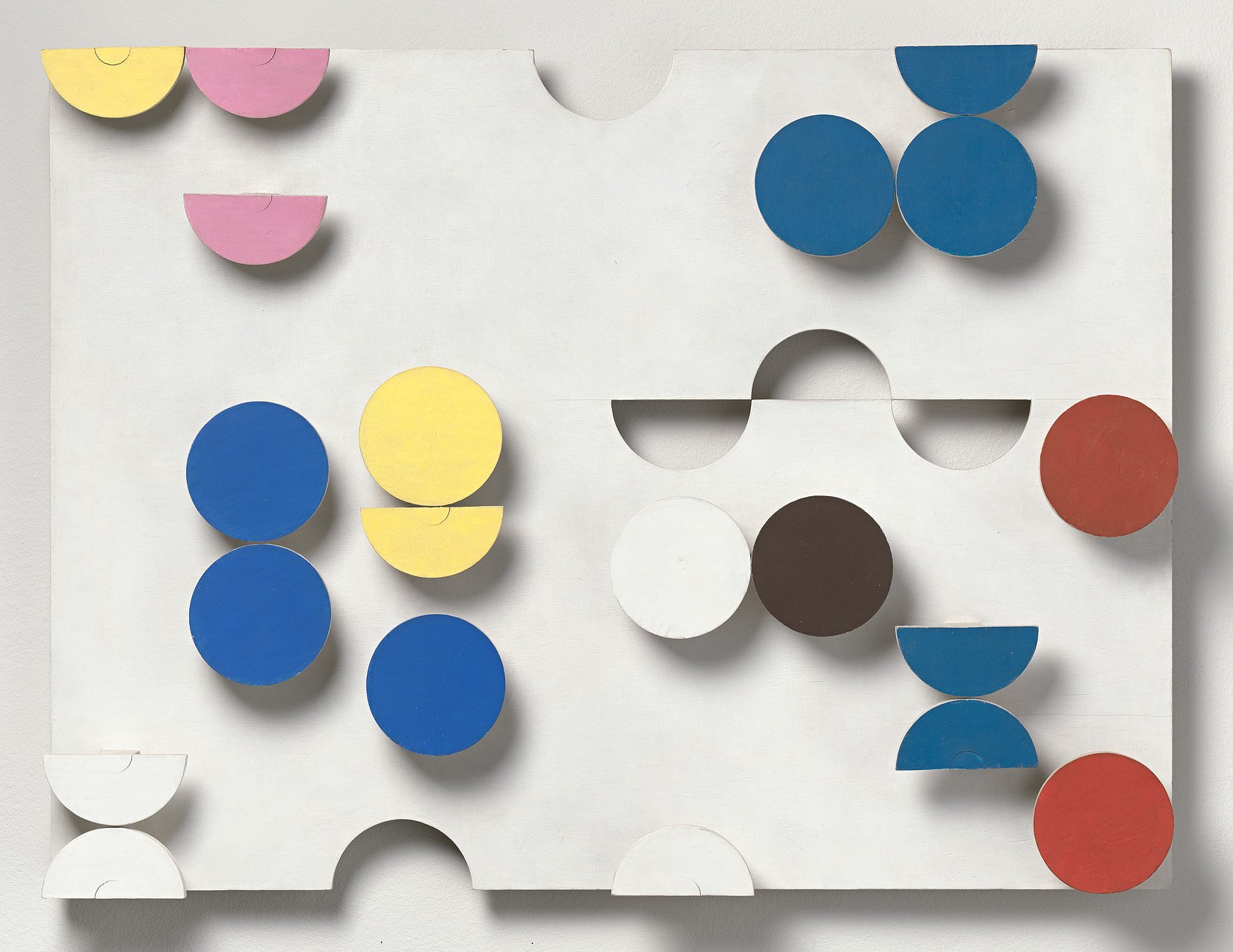Sophie Taeuber-Arp
Relief rectangulaire, cercles découpés, rondelles sur tiges, 1936

Sophie Taeuber-Arp
Relief rectangulaire, cercles découpés, rondelles sur tiges, 1936
Kunst Museum Winterthur, Dauerleihgabe aus Privatbesitz, 2001
Foto: SIK-ISEA, Zürich (Philipp Hitz)
Along with Picasso and Mondrian, the Swiss artist Sophie Taeuber-Arp is one of the most important representatives of Classical Modernism. In the first half of the 20th century, she created a versatile oeuvre between applied and fine art. In doing so, she questioned conventional boundaries and constantly combined art and life. She worked across disciplines, from works on paper, paintings, textiles, and sculptures to design, architecture, dance, and performance. Already with her early textile works and design drawings, and at the latest with her paintings and reliefs of the 1930s, she is considered a pioneer of abstraction.
The wooden wall relief, on which colored circular forms seem to follow a choreography, also dates from this period. The work transfers Taeuber-Arp's important combination of forms and colors, from regular anchoring and carefree out-of-sequence dancing into three-dimensionality: circles split and push their way into vertical rows, cutouts in the wooden panel break through the patterns and reveal the wall behind them, while shades of blue that seem identical at first glance turn out to be gradations of color. The eye involuntarily searches for a system in the arrangement but fails to find one. The circular forms follow no rules and no pattern: any hint of order is consistently undermined.
This is precisely what is fascinating and appealing about Taueber-Arp's abstractions, which appeal to the mind and the senses and set them in motion in a clear, cheerful and generally understandable language.


